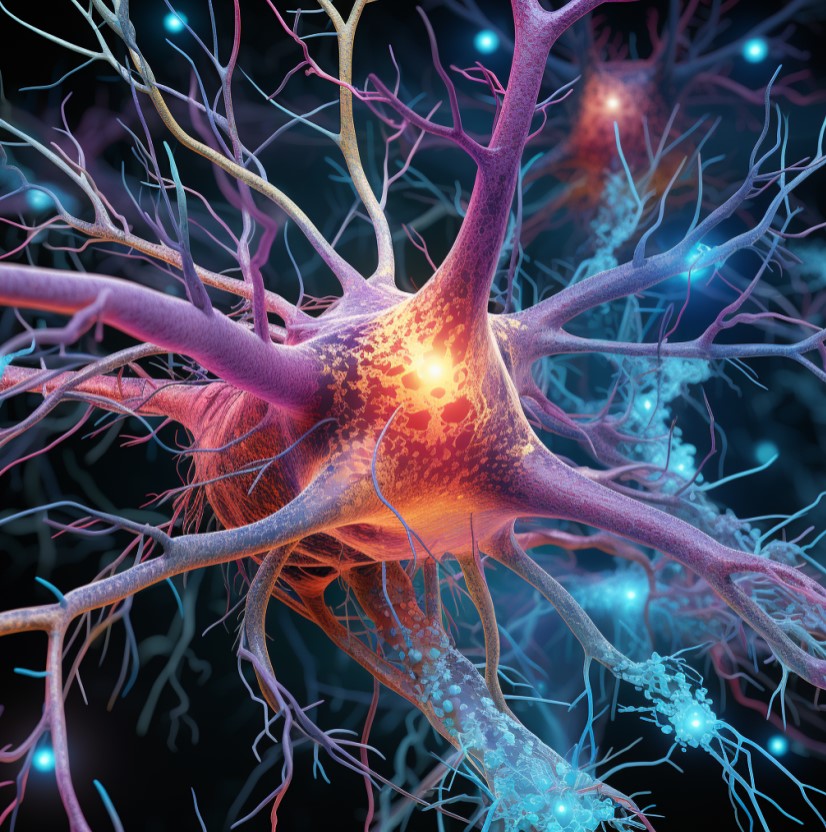Today’s technology is constantly under the influence of advances in artificial intelligence (AI). One of the most revolutionary concepts in this field is the so-called Transformer architectures. Now, researchers from elite universities Harvard and MIT have developed a theory of how such an architecture could potentially be recreated using biological elements of the brain.
Background: Transformers and AI
In artificial intelligence (AI), specifically in the field of machine learning, the term “transformer” refers to a specific architecture for deep learning models. Introduced in 2017 in a paper titled “Attention Is All You Need” by researchers at Google, the Transformer architecture has revolutionized the way machine learning is done, particularly in the field of natural language processing (NLP).
Core components and how it works
Self-Attention Mechanism: At the core of the Transformer architecture is the self-attention mechanism. This allows the model to give different weights to different words or tokens in a sentence, depending on how relevant they are to the word currently being considered.
Positional Encoding: Since transformers have no inherent notion of the order or position of data, they add information about the position of words in a sentence to better understand the context.
Feed-forward Neural Networks: each layer of the transformer also contains feed-forward networks that work separately for each word.
Multiple layers: A transformer consists of several such “layers” of attention and feed-forward networks that enable it to learn complex relationships in data.
Meaning and applications
The Transformer architecture has had a significant impact on the machine learning landscape in NLP. Some of the most well-known models based on the Transformer architecture are BERT (Bidirectional Encoder Representations from Transformers), GPT (Generative Pre-trained Transformer) and many of their variants. These models have set new standards on many NLP tasks, from text classification to text generation.
In summary, with their ability to efficiently incorporate context via the self-attention mechanism, Transformers represent a revolution in machine learning and are currently among the most powerful models for NLP tasks.
Biological networks as building blocks
But how might these technological marvels be anchored in our biology? The theory, presented by scientists from MIT, the MIT-IBM Watson AI Lab, and Harvard Medical School, is that a biological network consisting of neurons and special brain cells called astrocytes might be able to perform the core computations of a transformer.
The role of astrocytes
The researchers focused intensively on the cognitive functions that astrocytes perform in the brain. A mathematical framework was developed that describes exactly how astrocytes and neurons work together. This could serve as the basis for designing a transformer that mimics the complex biological processes of the brain.
Linking theory and practice
Central to the study is the so-called tripartite synapse, a connection that links an astrocyte, a presynaptic neuron and a postsynaptic neuron. These synapses could play an important role in performing normalization tasks in the self-attention mechanism of a transformer model.
The research team used mathematical principles of the transformer and built simple biophysical models. These show the interactions of astrocytes and neurons during communication in the brain. With clever combinations of these models, they were able to recreate a transformer’s self-attention mechanism in a neuron-astrocyte network.
Outlook and (glaring) potential of Brain-Inspired AI Transformers
A particularly exciting aspect of the research is the potential role of astrocytes in long-term memory. The network should be able to store information effectively, suggesting that astrocytes could play a role in this memory process.
However, it is important to emphasize that despite all the similarities, there are also major differences in the learning processes of humans and Transformers. While Transformers need constant data, the human brain works much more efficiently and does not require huge amounts of data to develop language skills.
Implications and opportunities for business in the case of success and use of technology:
New technologies and products:
Successfully replicating Transformer models with biological components could lead to a new class of AI products and services that are different from today’s cloud-based AI. These could be more efficient, less expensive, and perhaps even more environmentally friendly.
Personalized medicine:
deciphering the interactions between neurons and astrocytes could lead to personalized medical approaches in neuroscience and cognitive health. Healthcare companies could benefit from this research.
Education and training:
understanding how the human brain and AI models function similarly could open the door to advanced educational tools and platforms that make learning more effective and personalized.
Energy-efficient AI:
One of the challenges with AI today is its high energy consumption, especially for large-scale training. However, the human brain is extremely energy efficient. A better understanding of this efficiency could lead to more energy-efficient AI systems, resulting in cost savings and greener solutions.
Research and development: companies that invest in AI and neuroscience research could benefit from partnerships, patent rights, or licensing of new technologies that emerge from this research.
Consulting and expertise:
with the development and integration of such advanced technologies, there will be a need for expertise and consulting. Companies that build expertise in this area could act as consultants to other industries and sectors.
Market potential:
the combination of AI and neuroscience could open up new market segments or expand existing markets, particularly in healthcare, technology, education and consulting.
In summary, integrating Transformer models with biological brain components not only pushes the boundaries of understanding AI and human cognition, but also presents a wealth of economic opportunities and challenges for various industries. Companies that proactively pursue developments in this area and integrate them into their strategies could gain a significant competitive advantage.
Conclusion Brain-Inspired AI Transformers
The attempt to link the mechanisms of Transformers and the human brain is fascinating. The discoveries could help us better understand the flexibility and performance of our brains. While the road from theory to practical application is still long, the findings so far offer promising prospects for the future of AI research.
Source: MIT News, Study-Paper
